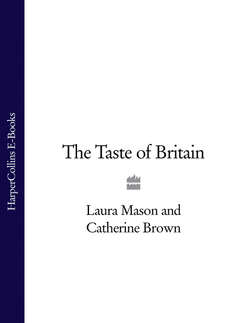Читать книгу The Taste of Britain - Hugh Fearnley-Whittingstall - Страница 215
HISTORY:
ОглавлениеRusset pippins were described in the seventeenth century. This may simply have indicated red-flushed apples, as the word russet also carries a meaning of redness. Russet in the sense of rough-skinned does not seem to have been used until late in Victoria’s reign. It was in the second half of the nineteenth century that the Egremont Russet was first noted. Exactly where it originated is unknown: it was first recorded in Somerset, but the name suggests a link with the estate of Lord Egremont at Petworth (Sussex). The head gardener from the estate maintained that it was raised there (Morgan & Richards, 1993). It was commercialized in the early twentieth century but suffered from being in season at the same time as the Cox’s Orange Pippin. However, demand has continued and the Russet is still available.
The enthusiasm of the British for after-dinner drinking of port accompanied by fruit and nuts is one reason for their affection for the russets as a group. Their especial flavour, reminiscent of nuts and spice, and happy balance of sweetness and acidity matched that of the wine far better than any other style of dessert apple.
